By:
Shubham Sunil Malu.
ABSTRACT:
With the growth of construction industry there is need to give quality in it. Many of the projects fail in construction field because of improper results and improper testing on site. One of the basic and important test is compressive test which should be done carefully since it is taken as the backbone of all tests of civil engineering related to concrete. Compression test is required almost in every project since it gives us a brief idea of the grade and type of concrete. Many of them do small mistakes in these which includes the different exclusion of different parameters of concrete, improper procedure for filling and compacting concrete, wrong methods of testing of concrete and many more. This paper contains all the necessary parameters, equipment and the acceptance criteria of the test. It also includes procedure for filling and compacting concrete as well as methods of testing of concrete.
1. INTRODUCTION:
The most common test for hardened concrete is the compressive strength, at a particular period of time, from the time of casting the concrete cubes. It is very important for engineers and technicians to obtain accurate results of compressive strengths of concrete. Compressive strength over a period of time also indicates the extent of quality control being exercised at the site.
This paper covers, briefly, the purpose of compressive strength of concrete test cubes, parameters, which can affect the compression strength of concrete, also some basic and advanced apparatus required for the test and the precautions for the test. It also discusses different types of cube failure that can occur.
2. PURPOSE OF THE TEST:
Well we all know the basic purpose of the test and some other purposes of the tests are as follows:
• The compressive strength of cubes gives us the information of the potential strength of the concrete mix from which it is sampled.
• It helps in determining whether correct mix proportions of various mix proportions of various materials were used to get the desired strength.
• It helps in determining the time of removal of formwork or the time of taking the concrete structure into service.
• It helps in determining the rate of gain of strength of concrete samples if cubes from the samples are crushed at different periods of time.
• The variations in the results obtained at the site, from time to time for a particular grade of concrete can help in determining the quality control exercised and uniformity of concrete produced.
3. PARAMETERS AFFECTING COMPRESSION STRENGTH OF CONCRETE:
It is extremely important for engineers and technicians to know the significance of the various parameters that can lead to low compression strength of concrete in the structure or result in failure of the concrete cube at loads lesser than minimum specified strength.
Although the quality and grade of cement as well as the water to cement ratio of the concrete mix play a very important role in the compression strength of concrete, other parameters can also influence the compressive strength to a greater extent.
The most significant parameters are briefly discussed below:
3.1. CEMENT:
The chemical composition and fineness of cement can influence the aggregate relation of concrete quite significantly. The early strengths of cement are attributable to the higher content of Tricalcium Silicate than Dicalcium silicate content. Similarly, finer ground cement will give higher early strength than the coarser ground cement with similar chemical composition. Even though the early strengths may differ due to the above factors the ultimate strength at 28 days may not change significantly.
Variations in compressive strengths of concrete can also occur to a considerable extent if the supply of cement is received from different production units of the same brands. It is, therefore, necessary to obtain cement at the site from one consistent source.
Variations in compressive strengths of concrete can also occur if there are considerable variations in the compressive strength of cement produced by the same production unit. It is, therefore, necessary to obtain the monthly standard deviation of the cement compressive strengths and also ascertain the coefficient of variation from the cement manufacturer to co-relate the chances of concrete cube strength variations due to variations of cement strength from time to time. It is, therefore, incorrect to assume the grade of cement from the test report or from the average monthly strength or from the grade printed on the cement bag but by using the formula given below:
Grade of cement= (Average compression strength for a month)- (1.65 times the standard deviation
Of the same month.)
3.2. WATER:
The water to cement ratio (W/C) by weight plays a very important role in the concretes and durability. Lower the W/C, higher the strength and durability of concrete. Slight variations in W/C can cause considerable reduction in durability. The changes in strengths are more significant in the lower ranges of W/C as well as when higher grades of cement are used. It is therefore very important to accurately batch water such that it does not exceed more than 1%.
3.3. CEMENT STORAGE AND TRANSPORTATION:
Storage of cement in a proper manner is of importance as it is a hygroscopic chemical and can easily lose its strength and other essential properties if it comes in contact with moisture or water.
The transportation of cement is equally important. Cement must arrive at site from the production unit in the shortest possible time with minimum numbers of handling. Delays during transportation and increase in numbers of handling can cause considerable drop in strength and other properties as cement may get exposed to moisture or water especially during monsoon.
The cement, which is not stored, transported and handled properly, will lose its strength and in turn, influence the strength of concrete in which it is used.
3.4.CEMENT PACKAGING:
Cement packed in bags using very porous material is more susceptible to loss of strength and hence packaging material of cement bags can greatly influence the strength. Preservation of cement strength for a longer duration under similar conditions of exposure is greatly dependent on the type of packaging material used. This, in turn, can greatly influence the strength and durability of concrete.
3.5. AGGREGATES:
The following characteristic properties of aggregates influence concrete compressive strength.
• The size of aggregates- Larger the maximum aggregate size (MAS) lesser is the cement paste required and hence will need lesser cement and water paste for some compression strength and workability as compared to aggregates with smaller MAS.
• The shape of aggregates- Rounded aggregates have lesser surface area than crushed cubical aggregates of the same specific gravity and hence will need lesser cement and water paste for same compressive strength and workability.
• Grading of aggregates- Presence of finer fines in aggregates causes an increase in surface area. Therefore excess finer fines in aggregates will increase the water demand and will, therefore, require to coarser fine aggregate.
• Porosity- Porous aggregate may crush when compressive loads are applied before the failure in the mortar bond between the aggregates can occur. The compressive strength will lower if less dense or porous aggregates are used.
To conclude, all parameters remaining identical, concrete compression strength will be higher for concrete made using fine aggregates having lesser finer fines, aggregates having maximum aggregate size, aggregates having rounded shape and/or aggregates having less porosity/ having density.
3.6.CONCRETE WORKABILITY:
If all concrete mix parameters are identical and only water is added to increase the workability then the compression strength of mix with increased workability will be less than the compressive strength of the original mix.
3.7.CONCRETE TRANSPORTATION AND PLACEMENT:
Generally concrete cubes are taken at the batching/mixing plant. The concrete mix if not transported and/or placed properly it will segregate and/or lose its workability. Segregated concrete forms honeycombs and is porous having large void content. 5% voids means 30% loss of strength and 10% voids means 60% loss of strength. The concrete cube test result will be satisfactory but the concrete in the structure would have a much lower strength.
3.8.CONCRETE COMPACTION:
Concrete ingredients when mixed have considerable amount of entrapped air depending on the workability. High workable mixes have lesser entrapped air than low workable mixes. The entrapped air is driven out by compaction using vibration techniques. If the compaction is not done properly the entrapped air remains within the concrete mass, with the result that, for every 1% entrapped air there will be around 5% to 6% drop in strength. It is therefore a must to compact concrete in the cube moulds as well as in the structure properly until such time entrapped air is less than 2%
4.APPARATUS REQUIRED FOR THE TEST:
4.1. CUBE MOULDS:
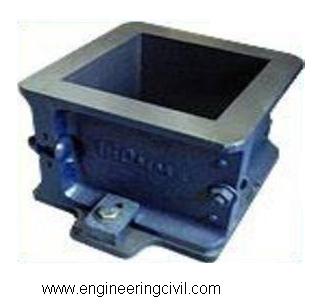
Figure 1: Cube mould of size 150 X 150 X 150 mm
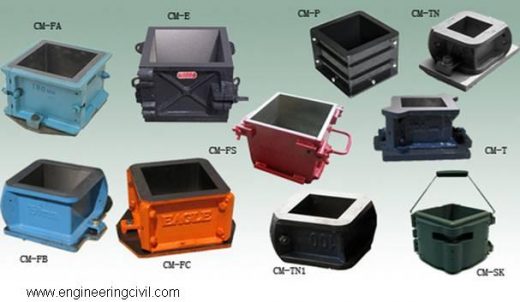
Figure 2: Different types of moulds with different sizes
4.2.TAMPING RODS:
4.3. SPANNERS:
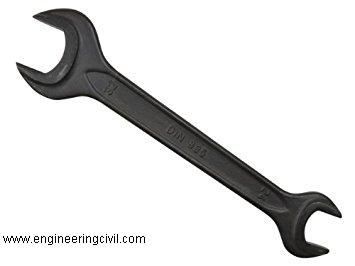
Figure 4: Spanners
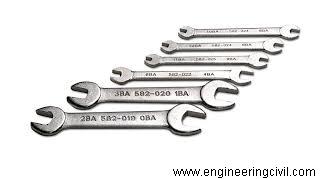
Figure 5: Different types of Spanners
4.4.MOULD OIL:
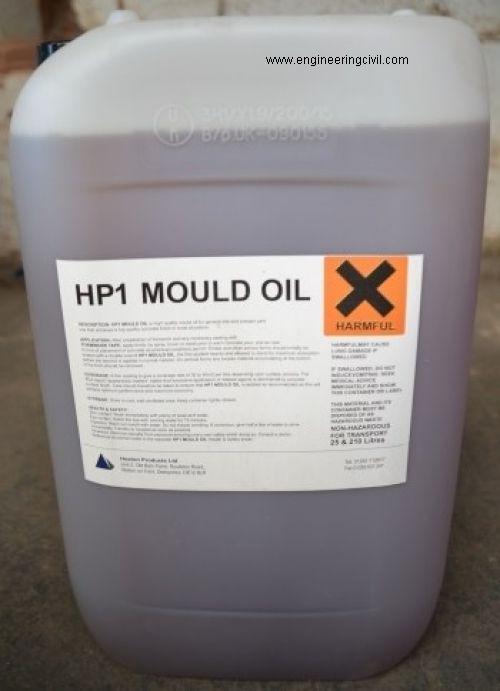
Figure 6: Typical type of Mould oil
4.5.SCRAPER:
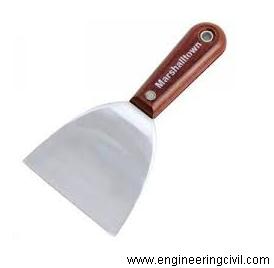
Figure 7: Scraper
4.6.BIG SIZE SCOOP TO HOLE AROUND 5KG CONCRETE:
4.7.SMALL SIZE SCOOP TO FILL CONCRETE IN THE MOULDS.
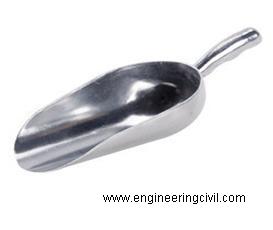
Figure 8: Typical Metal Scoop
4.8.A LEVELLING FLOAT:
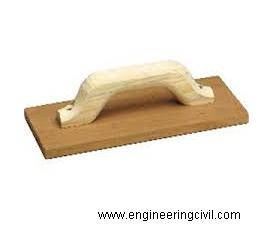
Figure 9: Levelling Float
4.9.WHEEL BARROW OR BUCKET OR GAMELA.
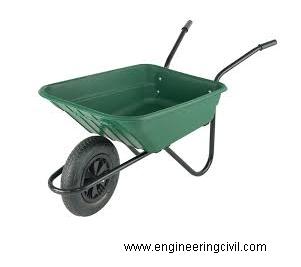
Figure 10: Wheel Barrow
4.10.CLEANING RAGS OR COTTON WASTE.
4.11.NON-ABSORBENT TRAY OR STEEL PLATFORM FOR REMIXING CONCRETE.
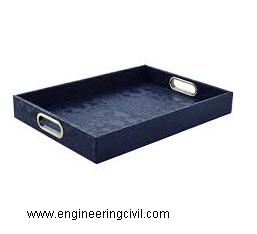
Figure 11: Non-absorbent tray
4.12.SHARP MARKING SCRAPER OR WATERPROOF CRAYON.
4.13. TEMPERATURE CONTROLLED CURING TANK.
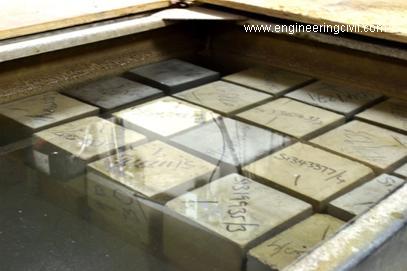
Figure 12: Temperature controlled curing tank
4.14.DAMP SACKS OR POLYETHYLENE SHEETING.
5. PROCEDURE FOR FILLING AND COMPACTING CONCRETE IN CUBE MOULDS:
• Filling of cube moulds must be done in three layers each approximately of 50 mm thickness. The concrete must be placed using a scoop and the scoop should be moved around the top edges of the cube mould so that symmetrical distribution of concrete is done in each layer as the concrete slides down from the inclined scoop into the moulds.
• Each layer must be compacted fully either by using a tamping rod or by using vibration techniques. If concrete is compacted by hand tamping, in 150 mm mould, then 35 strokes are given per layer uniformly covering the entire surface especially the corners. If 100mm mould is used then each concrete layer must be hand tamped giving 25 strokes.
• To avoid entrapment of air in corners and the sides it is recommended to tamp the sides of the moulds either by using the tamping rod or by using a wooden mallet. Concrete in cube moulds can also be compacted using vibrations techniques. Electric or pneumatic hammer or vibrating table should be generally used. Never try to compact cubes using a needle or poker vibrator.
• This will harm the needle vibrator and also due to the vibrations the mould will tend to move about a good deal on the base plate and may cause leakage of the cement slurry or disorient the shape of the cube.
• If the electric or pneumatic hammer vibrator is used then it is recommended that cube moulds, which have firm bolting arrangement between the sides and the base plates, be used. Use of clamps instead o bolts may not give adequate fixity. It is necessary that filling and compacting operations should be done in an identical manner in three layers as in the case of hand tamping.
• It is necessary to hold the electronic or pneumatic hammer down onto a piece of timber placed over the top of the mould. When the electric hammer is used it is also preferable to keep the mould on a levelled hard wooden piece rather than on any hard surface.
• The concrete should be compacted fully well in each layer leaving no chance for air entrapment within its mass. When air bubbles no longer appear on the top surface of concrete it is understood that the concrete is fully compacted. Continue compaction or vibration until such time the concrete in the mould overflows and it is not possible to fill in more concrete.
• Finally, trowel the surface level with the top of the mould. Identification mark, number and/or date can be lightly scratched on the wet trowelled concrete surface using a matchstick or a scraper.
6. PROCEDURE FOR IDENTIFICATION, CURING AND TESTING OFCONCRETE CUBES:
• After finishing the concrete, cube mould should be immediately covered with damp hessian cloth or transferred to a room wherein the relative humidity is 90% and the temperature is 27 +2 or -2 degrees.
• Coding/marking/identification should be done such that the strength of the test sample can be easily correlated to the concrete mix used and the structure in which the concrete was poured.
• Strip the mould after 16 to 24 hours gently without damaging the edges or surfaces of the cubes
• Submerge the specimen in the curing pond containing clean water till such time it is due for testing.
• Check the dimensions and weight of the specimen before testing.
• If NDT (Non-destructive testing) Facilities are available carry out the same on the cubes before they are crushed. This will help in the collection of useful data for correlating the reading of NDT equipment with strength obtained by crushing the cubes.
• It is recommended that at least 3 cubes readings of the same batch be tested at a time and average of test results be considered for the compression strength. The individual test results should not vary by +15% or -15% from the average. If the results of the samples are invalid as per IS: 456.
• The cube should be placed in compression testing machine in such a manner that the smooth faces of the cubes rest on the steel plates. The face of the cube which is trowel finished should never be brought into contact with the machine platens as it will cause asymmetrical loading of the cube due to an uneven surface as compared to the faces which are moulded smooth.
• The loading should be done without slackening and increased continuously at a rate of 140 Kg/Sq.cm./min. until the concrete cube breaks down or is crushed and no additional load can be sustained.
• The appearance of concrete after failure and the observations of the failures must be recorded.
7. ACCEPTANCE CRITERIA FOR COMPRESSIVE STRENGTH:
The concrete shall be deemed to comply with the strength requirements, as per IS: 456 (under revision), if:
a) Every sample has a test strength not less than the characteristic value;
b) The strength of one or more samples though less than the characteristic value, complies with the following condition:
1) The strength determined from any group of four consecutive test results complies with the appropriate limits in column A of table shown below
2) Any individual test results comply with the appropriate limits in column B of the table shown below.
Table 1: Characteristic compressive strength compliance requirements
| Specified Grade (1) | Mean of the group of 4 non-overlapping consecutive test results in N/mm2(2) | Individual test results in N/mm2(3) |
| M 15 | > or equal to Fck+ 0.85 times established standard deviation (rounded off to nearest 0.5 N/mm2)or Fck + 3 N/mm2 whichever is greater | > or equal to Fck – 3 N/mm2 |
| M 20 or above | > or equal to Fck + 0.825 times established standard deviation (rounded off to nearest 0.5 N/mm2)or Fck + 4 N/mm2 whichever is greater | > or equal to Fck – 4 N/mm2 |
The quantity of concrete represented by a group of four consecutive test results shall include the batches from which the first and last samples were together with all intervening batches.
For the individual test result requirements given in column B of above table, only the particular batch from which the sample was taken shall be at risk.
8. MODES OF FAILURES:
8.1. USUAL:
Equal cracking of all four exposed faces with little or no damage (top and bottom) in contact with the platens. Cracking is usually of a vertical zigzag pattern. The crack and failure pattern are shown in the below fig.
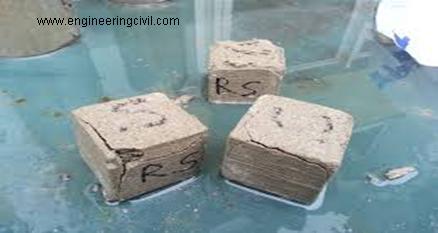
Figure 13: Usual Failure of Concrete
At times four vertical faces away leaving two truncated pyramids one inverted over the other. This sometimes accompanied by an explosive sound.
8.2. UNUSUAL MODE.
Concrete cubes may get crushed on one side or will develop tensile crack on one or more faces and fail. Fig shown below shows some of the likely unusual failures of concrete cubes. This type of failure will give lower indication of compressive strength of concrete. These are usually due to defects associated with testing machine. Faulty manual operation, faulty placing of cube, faulty casting of cube are also responsible for such defective failures.
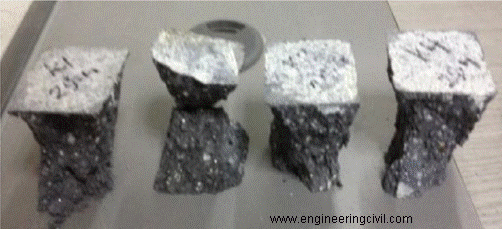
Figure 14: Unusual failure of concrete cubes
Even if cubes fail in the unusual mode it does not mean that machine is working properly. A continuous check of the hydraulic system and dial gauges is necessary. At the same time rate of loading has to be correct both in motorised and manually operated machines. Operators and the supervising engineers must continuously check the machine and observe the tested cubes regularly.
The test specimen must not be placed off centre. Specimen must be placed on the clean platen. The contact between the top and bottom surfaces of the cube and the two platens must be full and uniform. The operator must check these loading operations are started.
9. CONCLUSION:
Concrete cube testing and maintaining good cube test records does not mean quality control of concrete works. Often the records show excellent cube results but the actual concrete is extremely poor. Concrete cubes are often cast with the stiffer mix (lower water to cement ratio) or using additional cement while actual concreting is done without any regards for water to cement ratio which in turn influences strength and durability of the structure. This approach has to change and the Engineer must produce concrete of good strength and durability for the structural members rather than for keeping cube test records satisfactory.
Concrete will deteriorate and disintegrate and give indications of bad quality after few years even though concrete cube results were very satisfactorily.
Conversely, a concrete structure constructed may be of good quality but the careless procedure for sampling, casting, curing, and testing of concrete cubes may give unsatisfactory results indicating low strengths.
Careful monitoring of each and every step is necessary for this important test.
10.REFERENCES:
1. IS: 516 -1959 ‘METHODS OF TESTS FOR STRENGTH OF CONCRETE ‘Bureau of Indian Standards, New Delhi, 2007.
2. IS456: 2000, Code of practice for Plain and Reinforced Concrete, Bureau of Indian Standards, New Delhi, 2007
3. ‘http://www.azom.com/article.aspx?ArticleID=5550’
4. National ready mix concrete association ‘https://www.nrmca.org/aboutconcrete/cips/35p.pdf’
5. ‘https://en.wikipedia.org/wiki/Compressive_strength’
6. Shetty M.S. “Concrete technology”
We at engineeringcivil.com are thankful to Shubham Sunil Malu for submitting this very useful paper to us. We hope this will be of much help to all those who are seeking more information on Compression test on concrete.
If you have a query, you can ask a question here.



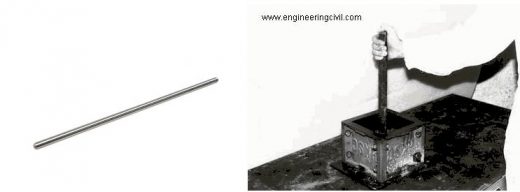
How to calculate
how much load require for M50 Cube Mould.